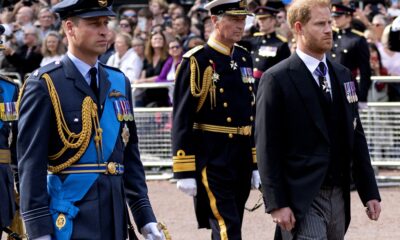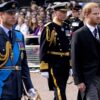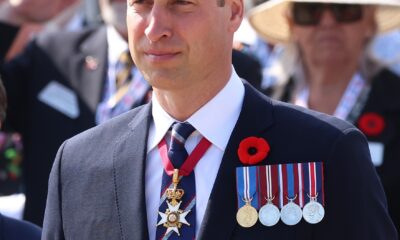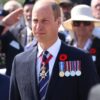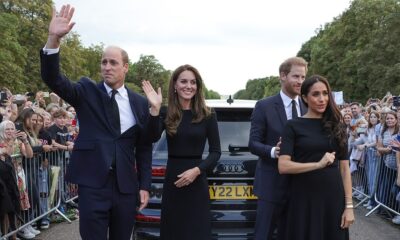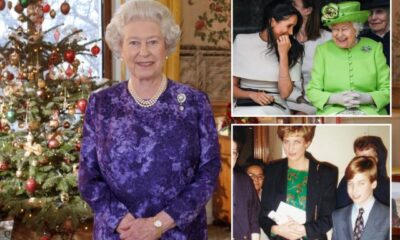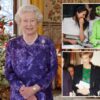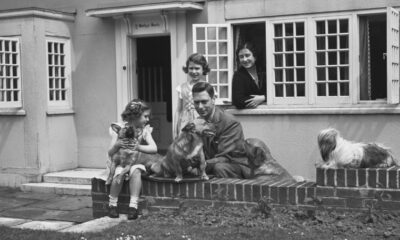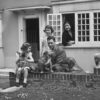Must Read
A Day in the Life of Queen Elizabeth II at Buckingham Palace
The Royal Routine: A Glimpse into Queen Elizabeth II's Daily Schedule
It is 7:30 am, and Buckingham Palace is slowly awakening.
The police sergeant stationed outside the Queen's bedroom is nearing the end of his overnight shift.
Originally scheduled to finish at 6:30 am, an additional hour was added to his duty after an intruder broke into the Queen's bedroom one morning in 1982 when no guard was present.
As the Queen's personal maid approaches, carrying a tray with pots of earl grey tea and hot water made of solid silver, the morning rituals begin.
The cup and saucer, crafted from bone china, are accompanied by a fine linen napkin embossed with the royal cipher E. With a light tap on the door, the maid signals the start of the second hour.
Just a few yards away, Prince Philip's set of rooms boasts functionality.
Complete with a well-equipped barber shop featuring a padded and fully adjustable chair, wash basin, and a machine for heated towels, it is a space designed for practicality.
Although a prominent barber visits weekly to trim the royal locks, the Duke prefers to shave himself, spending most of his time these days at Wood Farm on the Sandringham estate in Norfolk.
While Prince Philip enjoys his retirement, the Queen spends her weekdays alone in London.
As the maid enters her bedroom, she gracefully makes her way towards the bedside table adorned with family photographs and a telephone equipped with a panic button.
It was on that fateful morning when an intruder, Michael Fagan, became the only man, besides her husband, to witness the Queen asleep in bed, as the panic button was spectacularly ignored.
The Queen's bedroom is decorated in her favorite shade of pale green.
Her maid switches on the Roberts Radio, tuned to BBC Radio 4, allowing the Queen to wake up to the sound of John Humphreys and his colleagues grilling politicians on the Today program.
While Her Majesty enjoys her first cup of tea, her maid prepares the bath in the adjoining bathroom.
The water's temperature must be precisely right, tested using a wooden-cased thermometer, with no more than seven inches of water.
Simultaneously, one of the Queen's dressers, under the supervision of Angela Kelly, her personal assistant and curator of her wardrobe, lays out the first outfit of the day in the adjacent dressing room.
Adorned with floor-to-ceiling mirrors and walk-in wardrobes, this space is where Mrs. Kelly meticulously plans the Queen's attire.
Armed with the Queen's daily program from the previous evening, Mrs. Kelly knows exactly what is needed.
The Queen rarely makes her own clothing choices; that is what her dressers are there for, she asserts.
Once dressed, the Queen's hairdresser expertly brushes and styles her hair, maintaining a look that has remained unchanged for decades.
Promptly at 8:30 am, breakfast is served in the Queen's private dining room.
A footman places the food on a hot plate, consisting of a silver muffin dish with hot water underneath.
The Queen enjoys her meal in solitude, while a lone piper from one of the Scottish regiments plays her favorite tunes on the terrace below.
By 9:30 am, the Queen is seated at her desk in her sitting room, which doubles as her office.
This room exudes comfort rather than luxury, with armchairs and sofas upholstered in country house-style chintz.
The Chippendale desk, brought from Clarence House in 1952, holds a heavy crystal double inkwell, containing black ink for official documents and her preferred green ink for personal letters.
The Queen rarely uses a ballpoint pen, favoring her trusted old fountain pen.
The desk may appear cluttered to the average eye, but the Queen knows the precise location of every item and dislikes anything being moved without her permission.
Her press secretary prepares a digest of the day's news from early morning radio and television bulletins.
Once the Queen has perused these papers, she presses a button on the console before her.
Her private secretary, waiting in his ground floor office, hears the signal and knows it is time to begin the day's work.
Carrying a wicker basket filled with documents requiring the Queen's attention, he enters the room, offering a brief neck bow and addressing her as “ma'am.”
The Queen's mailbox receives numerous items daily, prompting her to master the art of scanning or speed reading.
For guests expected at the palace, the housekeeper is summoned to discuss domestic arrangements for their comfort.
Later in the morning, the duty lady-in-waiting joins the Queen in her sitting room.
Together, they review letters that require a personal response.
Special attention is given to letters from children and the elderly, with the lady-in-waiting writing and signing the replies on behalf of the Queen.
The Queen personally opens mail from her personal friends, indicated by their initials in the lower left-hand corner of the envelope.
At noon, official guests, such as incoming or outgoing foreign emissaries, have an audience with the Queen in the audience room.
This brief meeting, lasting approximately ten minutes, takes place within the Queen's suite.
Lunchtime is usually spent alone, unless one of her four children is present.
Prince Andrew occasionally joins his mother after receiving a formal invitation through the Queen's page.
The Queen prefers light meals, but each dish is meticulously presented, with sprouts, carrots, and potatoes perfectly matched in shape and size.
Throughout the day, she abstains from alcohol, favoring her beloved still Malvern water.
The head chef sends a weekly list of meal suggestions to the Queen's page.
After indicating her preferences, the menus are written in French, continuing the tradition established during Queen Victoria's reign.
French cuisine and handwritten menus in the language have remained an integral part of royal court dining.
Following lunch, the Queen enjoys a leisurely stroll in the gardens, a time when she prefers solitude.
Household staff know to keep their distance during this period.
She then relaxes for half an hour with the Sporting Life and Racing Post, immersing herself in the world of horse racing.
If there are afternoon engagements in the London area, the Queen's page alerts her personal police officer to be waiting at the garden door with the car door open.
While descending the stairs, she occasionally opts for the ancient lift.
A small group of individuals, including her private secretary and members of the household, bid her farewell and will be there upon her return.
All afternoon engagements conclude before 4:30 pm, ensuring the Queen can return to the palace in time for tea at 5.
This cherished meal remains unchanged, featuring precisely cut sandwiches without crusts, warm scones with cream and strawberry jam, and her favorite Dundee fruitcake.
After tea, the Queen returns to her office for another hour of work.
If there are no evening engagements, she retires to her private quarters just after 6 pm to rest before dinner.
Tuesday evenings hold a special appointment for the Queen.
At 6:30 pm, the Prime Minister arrives for their weekly audience.
Previously scheduled an hour earlier, the Queen adjusted the timing to spend more time with Prince Charles and Princess Anne during their childhood.
The official meeting takes place in the audience room, lasting no more than half an hour.
Dinner is the most relaxed meal of the day for the Queen, often enjoyed off a tray in her private quarters.
Here, she can indulge in reading or watching television in the sitting room adjacent to her office.
Frequently, she dedicates part of the evening to working on her official dispatch cases, containing correspondence from government departments in the United Kingdom and the Commonwealth.
Each evening, a report on the day's parliamentary proceedings, prepared by the Vice-Chamberlain of the Household, is delivered to her and read before she retires for the night.











